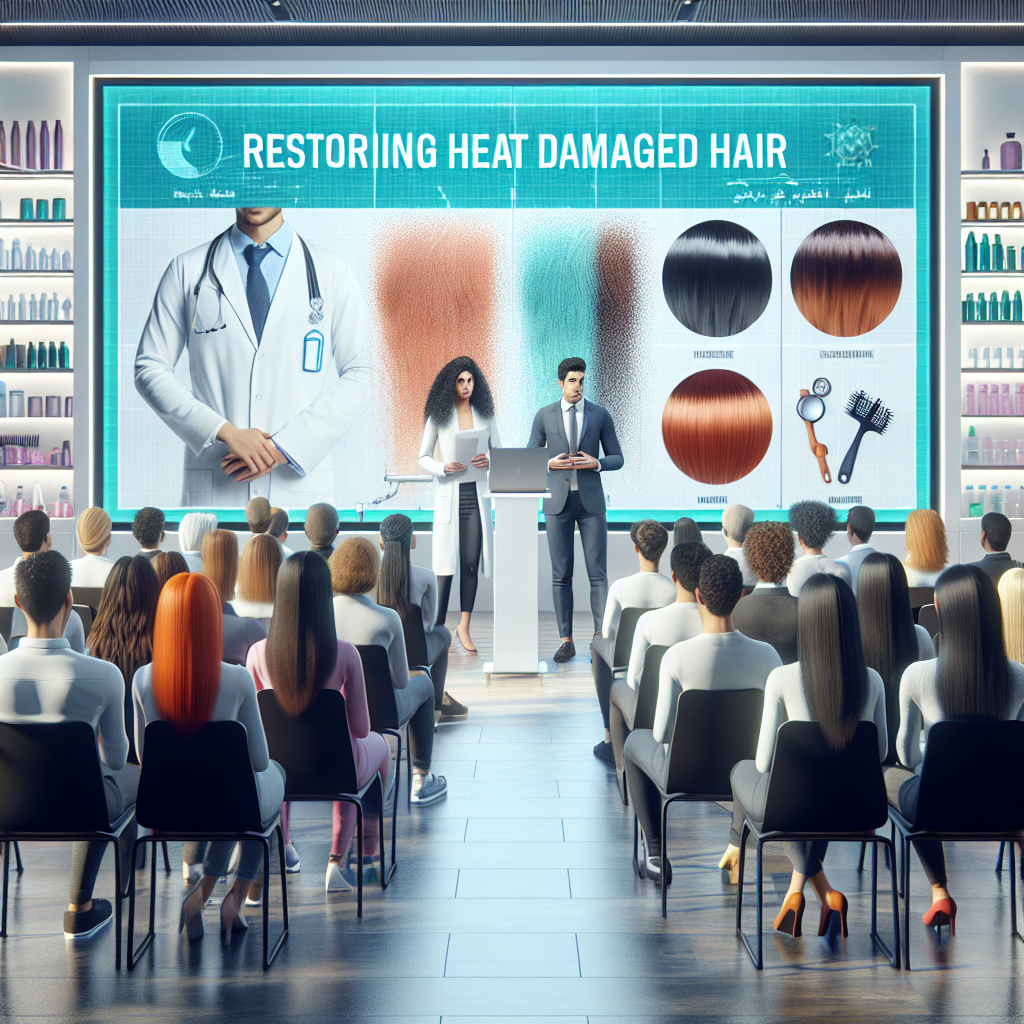To treat heat-damaged hair, using a product to protect the hair is essential. Caspara, a hair growth expert, recommended Biotera’s 2:1 Protective Leave-in and Overnight Treatment as an effective option. This product can protect the hair from thermal styling up to 450 degrees Fahrenheit and can be left on the hair overnight. It reduces breakage by over 80 percent when styling and contains scalp-friendly ingredients. Additionally, formulas that consist of polymers and silicones can provide a protective layer and prevent overheating the internal structure of the hair.
In addition to using protective products, Hallajian, a New York-based expert, suggested using the molecular repair mask by K18 to rebuild broken hair. This product is suitable for all hair textures and can help repair dry and brittle strands. Ingredients like shea butter, argan oil, and almond oil are also beneficial for repairing heat-damaged hair. These ingredients can help to nourish the hair and restore moisture, making it more resilient to heat styling.
Another important aspect of treating heat-damaged hair is to avoid excessive heat styling. Although it may be tempting to style the hair with heat tools frequently, this can further damage the hair and exacerbate existing problems. It is recommended to limit the use of heat styling tools and opt for heatless styling methods whenever possible. This can help prevent further damage and allow the hair to recover and repair itself over time.
In addition to using protective products and limiting heat styling, adopting a healthy hair care routine is crucial for treating heat-damaged hair. This includes using a gentle shampoo and conditioner suitable for your hair type, avoiding harsh chemicals, and regularly deep conditioning and moisturizing the hair. Trim the hair regularly to remove split ends and prevent further damage. It is also important to stay hydrated and eat a balanced diet to promote overall hair health.
Consulting with a professional hairstylist or dermatologist can also be beneficial when treating heat-damaged hair. They can provide personalized recommendations based on your hair type and specific concerns. They may recommend treatments like protein masks, keratin treatments, or other specialized products to help repair and strengthen the hair. Regular consultations can help track the progress of your hair and make adjustments to your hair care routine as needed.
Overall, treating heat-damaged hair requires a combination of protective products, limiting heat styling, adopting a healthy hair care routine, and seeking professional advice when necessary. With patience and consistency, it is possible to restore the health and vibrancy of heat-damaged hair. By following these tips and taking proactive steps to care for your hair, you can help repair and prevent further damage, ensuring your hair remains strong and beautiful.


